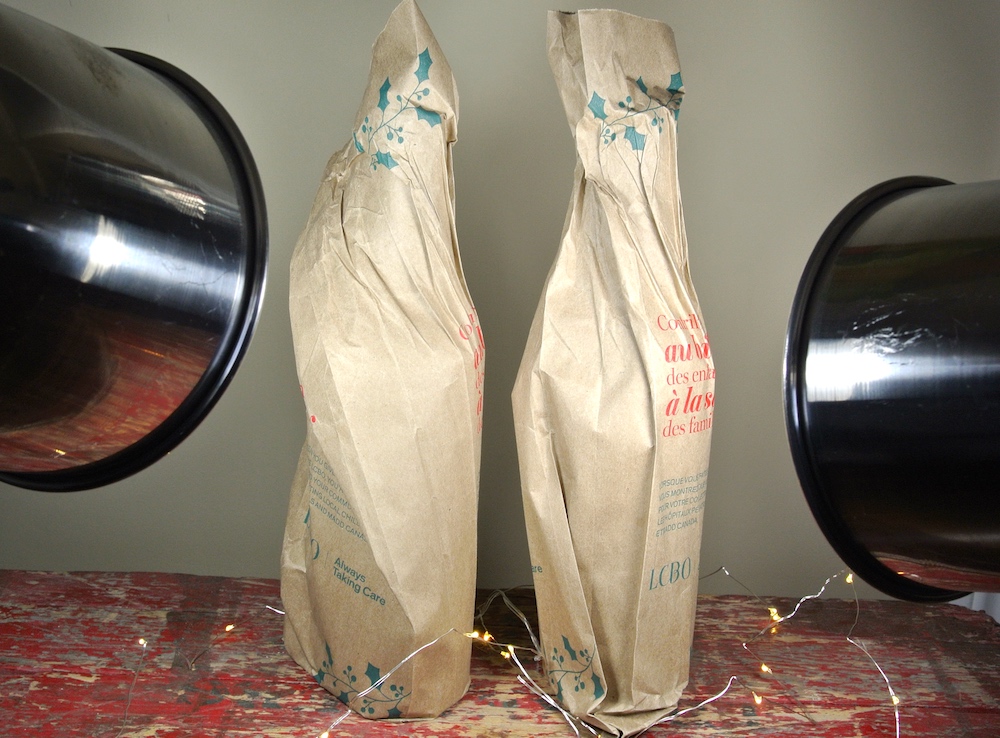
By Rick VanSickle
It is that most terrifying time of the year when Wines In Niagara puts it all out there for everyone to see, the annual list of Niagara’s Most Thrilling Wines of the Year for 2018.
Fun times? Not really, at least not for me. Hearts will be broken, dreams shattered, and in the spirit of 2018, accusations of collusion, nepotism, fake news and abuse of office will undoubtedly be tossed in this direction. Impeachment? Just try it!
Creating this list is an agonizing and heart-wrenching endeavor that can only lead to bitter disappointment, plenty of head scratching and maybe even remorse for the choices made below. But, hey! As David Bowie was fond of saying, no one ever said this job was going to be easy.
This is the 10th year for the list, an ever evolving snapshot of wines that each year stood just a little taller above all the others. It is never our intention to claim these wines are the absolute best Niagara has to offer. We could never taste every wine that was released in a given year in Niagara. It is a subjective list that is culled from the wines that we (myself and Michael Lowe) have tasted, some re-tasted, and others even re-evaluated. All (well, shouldn’t say all because both the Red and White Wines of the Year are being presented here for the first time) have been reviewed on Wines In Niagara and tasted in the 2018 calendar year (that part is accurate for all wines).
The 10 Most Thrilling Niagara Red and White wines of 2017 are listed with their original score and presented by score first and, secondly, alphabetically, because it had to be ordered somehow and that seemed convenient.
White and Red Wines of the Year
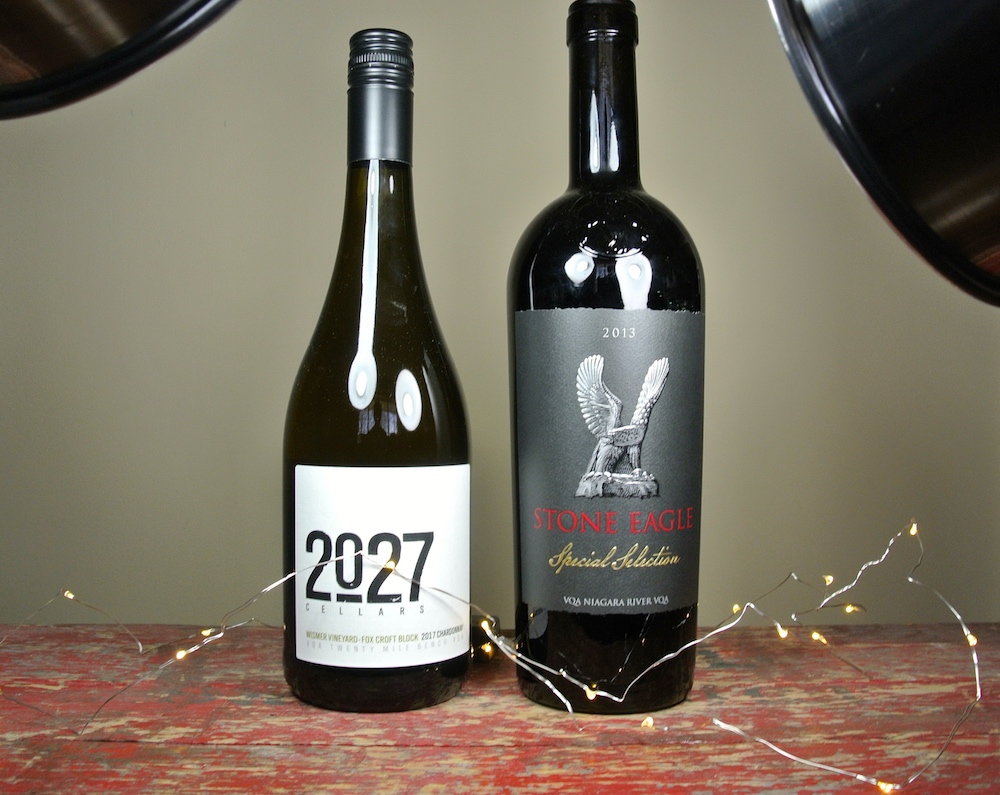
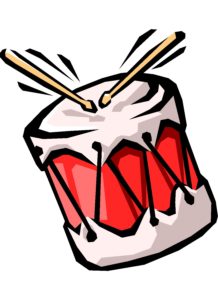 Drum roll, please … the Most Thrilling Niagara White Wine for 2018 is the 2027 Cellars Wismer Vineyard-Fox Croft Block Chardonnay 2017 and the Most Thrilling Niagara Red Wine for 2018 is the Two Sisters Stone Eagle Special Selection 2013.
Drum roll, please … the Most Thrilling Niagara White Wine for 2018 is the 2027 Cellars Wismer Vineyard-Fox Croft Block Chardonnay 2017 and the Most Thrilling Niagara Red Wine for 2018 is the Two Sisters Stone Eagle Special Selection 2013.
For me, the two wines of the year are as far apart in style (and price!) as they can be. The Stone Eagle, Cabernet Franc dominant red blend, made by Adam Pearce at Two Sisters, is an opulent, richly textured wine with immense depth and power, but approachable at point of sale. Seldom does a Bordeaux-varietal red wine in Niagara reach this level of ripeness and complexity without being overly tannic and unbalanced.
2027 Cellars winemaker Kevin Panagapka, on the other hand, turns to his faithful Wismer Vineyard-Fox Croft Block sourced Chardonnay for this stunning and restrained white that has all the hallmarks of what Niagara does best with this varietal. It is nuanced, loaded with Niagara flinty minerality, taut and precise and he does all this at a price unheard of for top Chardonnay in Niagara — $23.
They represent (for me) the top of the class from a pretty good honours roll of thrilling Niagara wines.
Fun with numbers:
• Total price of white wines on this list: $358
• Total price of red wines on this list: $653
• Most expensive white: Two tie at $48, Hidden Bench Tête de Cuvée Chardonnay and Stratus Vineyard Chardonnay 2015
• Least expensive white: 2027 Cellars Wismer Vineyard-Fox Croft Block Chardonnay 2017 (white of the year)
• Most expensive red: $146 for Two Sisters Stone Eagle Special Selection 2013 (red wine of the year)
• Least expensive red: $38 for Domaine Queylus Réserve du Domaine Cabernet Franc 2016
• Average price for all wines on the both lists: $50.55
• What it would cost you to buy them all: $1,011.
• Number of Chardonnays on the list: 7
• Number of Rieslings on the list: 3
• Number of Pinot Noirs on the list: 3
• Number of Cabernet Francs on the list: 3
• Number of Rosés on the list: 1 (honourable mention)
White Wine of the Year
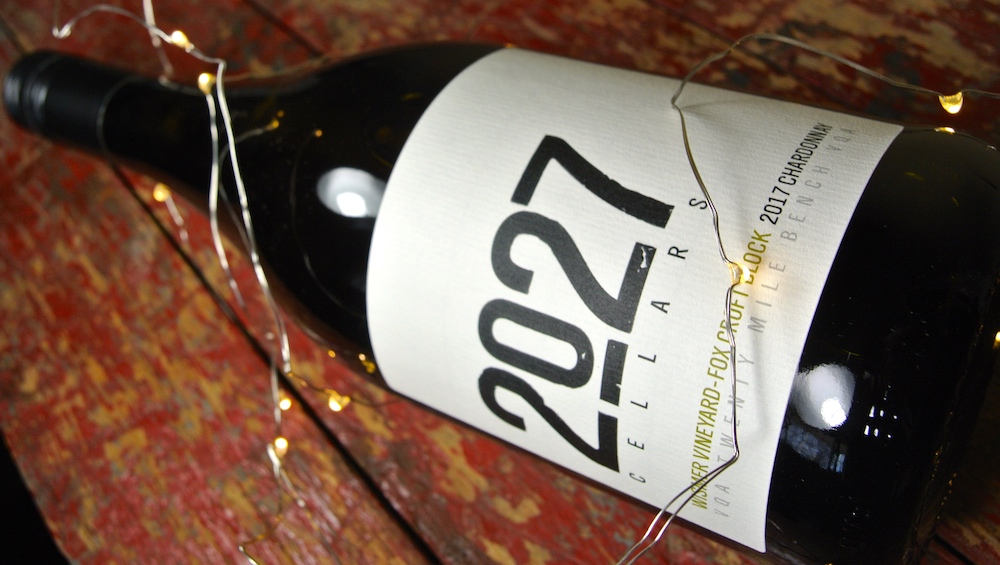
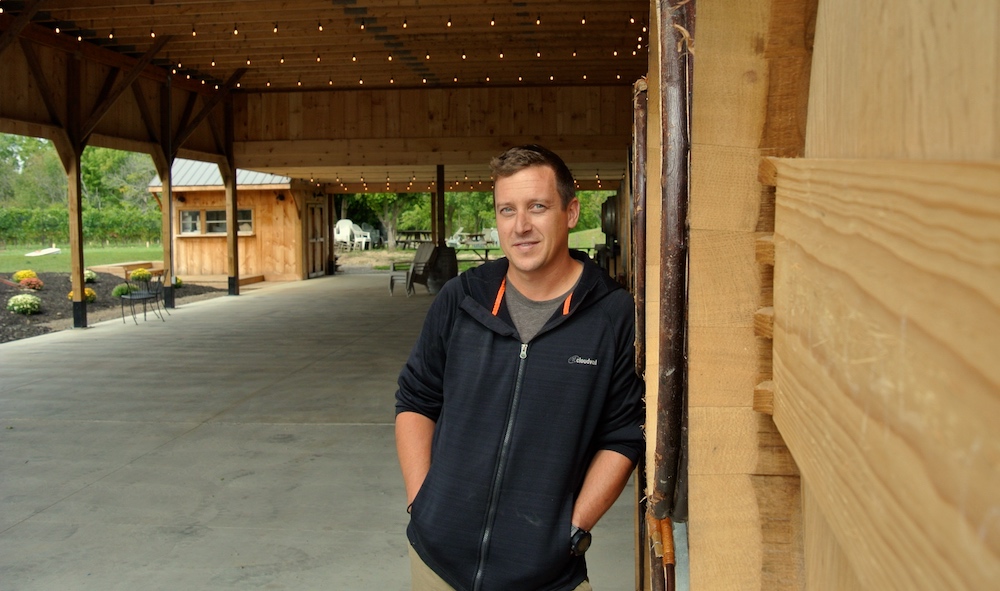
2027 Cellars Wismer Vineyard-Fox Croft Block Chardonnay 2017 ($23, 94 points) — Wow, just wow. When winemaker Kevin Panakapka, above, hits it, he hits it out of the park. This is one of those wines from his favourite vineyard on the Twenty Mile Bench (he’s not alone). Let’s get the technical notes out of the way. All 2027 Cellar Chards are 100% whole cluster pressed, wild fermented with 100% French oak aging (30%, new oak). The nose is mind-blowing; the first impression is like walking in a mountain stream, the sharp river rock scents combining with gunflint, pear, fresh-picked bin apple, fine elegant spices and lemon/citrus accents. You could bury your nose in this Chard for days, but it gets better. It’s fresh and lively on the palate, a lean and lively cool-climate Chard that combines layers of pear and apple with elegant spice and all that flinty goodness that is kept fresh by racy acidity. A sensational Chardonnay that clocks in at $23, for goodness sake. $23??? Crazy.
The Rest of the White Wines of the Year
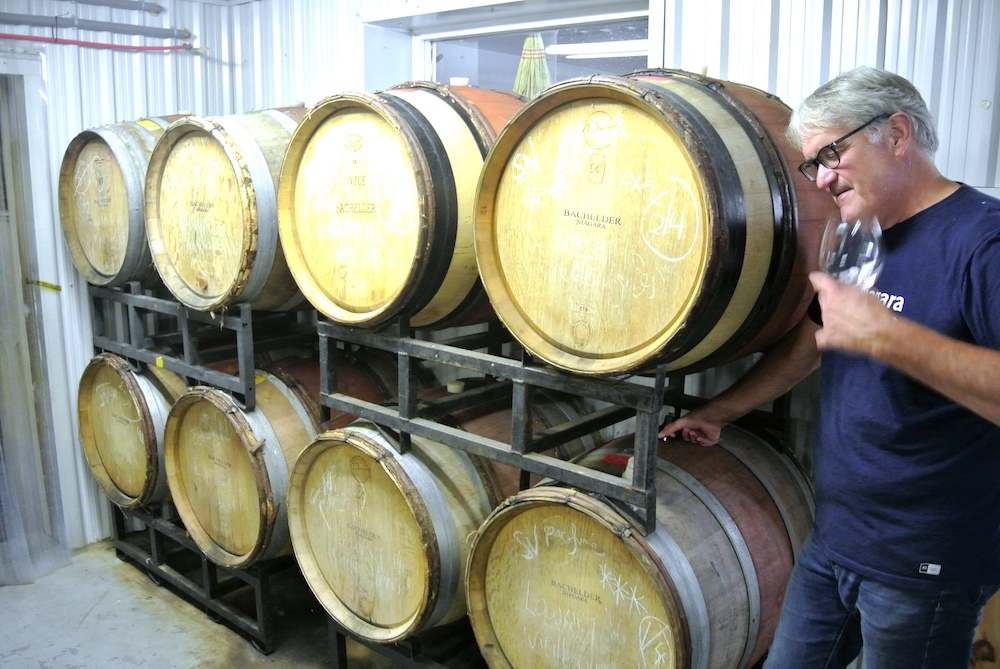
Bachelder Wismer-Wingfield Chardonnay 2015 ($45, 94 points) — The 2013 vintage of this Chardonnay from the Wingfield Block in the giant-sized Wismer Vineyard on the Twenty Mile Bench was Wines In Niagara’s Most Thrilling White Wine of 2017. So, there’s something about this wine that consistently rises to the top in my notes. It is subtle to begin, with flinty, saline minerality starting the attack on the nose. The apple and pear begin to emerge with citrus in behind. It was tight and fresh (when I tasted it last summer) with fine oak spice that slowly emerges. It is such a pretty wine, a seductive wine on the palate with soft orchard fruits, a touch of acacia honey, fresh lemon, layers of flint, pebbly/river rock minerality and such beautifully integrated oak spice that never gets in the way of the fruit. It is layered and textured and dances delicately on the tongue and leads to a long, long finish. Simply gorgeous wine once again. I can’t mention this wine without a shout-out to Thomas Bachelder’s other top Chardonnay, the Bachelder Saunders-Haut Vineyard Chardonnay 2015 ($45, 93 points) — The Saunders-Haut vineyard is pure Beamsville Bench terroir with vines just below Thirty Bench winery on Mountainview Road. This is a beautifully nuanced, heavily mineralized Chardonnay with waves of pear, citrus, honeysuckle, integrated oak spice notes and wonderful defining slate and chalk accents. Such tangible minerality on the palate, turning to flint and chalk and integrated with the pear/apple/citrus fruit that is all kept fresh by the racy and mouth-watering acidity.

Hidden Bench Tête de Cuvée Chardonnay 2014 ($48, 93 points) — This is a blend of Chardonnay from Locust Lane and Rosomel vineyards and finished unfined and unfiltered. The French oak treatment is 70% year-old barrels and the remaining neutral. This is consistently one of the best Chardonnays produced in Ontario, and a perfect example of the Beamsville Bench style. The nose shows notes of poached pear, baked apple pie, lemon accents, spice and wet-stone minerality. It’s nervy on the palate with mouth-watering acidity, nicely integrated orchard fruits, a touch of citrus, elegant oak accents and minerality through the finish. This is a beautiful wine that will cellar for 5+ years and just get better with time.

Stratus Chardonnay 2015 ($48, 93 points) — This starts with the best Chardonnay grapes from the Stratus Vineyard picked between Sept. 1 and 30. Wild yeast, battonage (lees stirring), 287 days in 40% new French oak and then bottled unfiltered with the lees. This wine is still alive and evolving when you get it and may gain complexity as it ages in the bottle, so consider cellaring a few bottles. It possesses a beautiful nose of poached pear, fine oak spices (but kept in check), baked apple, underlying minerality/leesy notes and just a touch of lemon. It has wonderful mouthfeel and texture on the palate with concentrated fruits of apple and pear that marry well to the oak spices and minerals. It’s long and luscious on the finish with freshening citrus to keep lively, vibrant and finessed.
 Tawse Limestone Ridge-North Estate Bottled Riesling 2016 ($24, 93 points) — This is killer Riesling. The nose lights up with salinity, lime, grapefruit and racy wet-stone minerality. It’s steely and taut on the palate despite fairly hefty RS and shows vivid citrus, fresh-squeezed lime, lemon zest and it’s all balanced on a razor’s edge. Such incredible definition and freshness through the finish. Beautiful.
Tawse Limestone Ridge-North Estate Bottled Riesling 2016 ($24, 93 points) — This is killer Riesling. The nose lights up with salinity, lime, grapefruit and racy wet-stone minerality. It’s steely and taut on the palate despite fairly hefty RS and shows vivid citrus, fresh-squeezed lime, lemon zest and it’s all balanced on a razor’s edge. Such incredible definition and freshness through the finish. Beautiful.
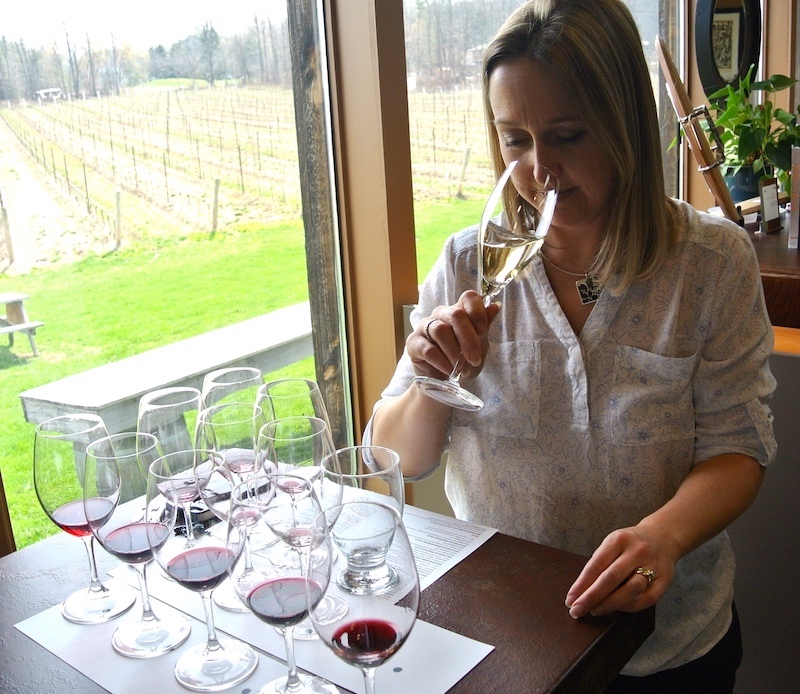
Thirty Bench Small Lot Wild Cask Riesling 2016 ($30, 93 points) – Winemaker Emma Garner, above, started the “wild cask” thing with the 2013 vintage after being inspired by a visit to the Mosel in Germany. This version of the Riesling is from Triangle Vineyard and is wild fermented in 500-litre neutral oak puncheons. The goal is for lower alcohol and higher acidity while leaving greater residual sugars (23 brix). “The wild ferment brings texture on the palate and fresh, bright acidity,” says Garner. There is a beautiful floral note on the nose that leads to quince, lime, peach, honey-dipped peach and subtle ginger and lime. More river-rock minerality and a lovely texture on the palate work well with the range of white flowers, succulent peach, grapefruit, lime-ginger and wild honey notes that all benefit from freshening acidity on the finish. Sensational Riesling that should reward with 5+ years in the cellar.

13th Street Essence Riesling 2016 ($35, winery, 92 points) — This is the first Essence (top tier) Riesling produced at the winery. The fruit is from the estate vineyard and is vinified in seasoned 500L casks. Winemaker JP Colas is not looking for aromatics or spice from the oak casks, but complexity and structure. It shows a range of pear, apple, lemon, candied citrus, mineral and a subtle reductive note. It’s bone dry and fresh on the palate with complex flavours of citrus and mineral with integrated orchard fruits in behind. Wonderful freshening acidity keeps this lively through a long finish.

Flat Rock Cellars The Rusty Shed Chardonnay 2016 ($27, 92 points) — The Rusty Shed represents a barrel selection of estate Chardonnays chosen for their full flavoured richness on the palate. This is absolutely in that vein with a concentrated nose of creamy apple and pear with lemon and spice accents. It is rich and creamy on the palate with quince and citrus notes, flinty minerality, lovely texture and a vibrant, fresh finish.
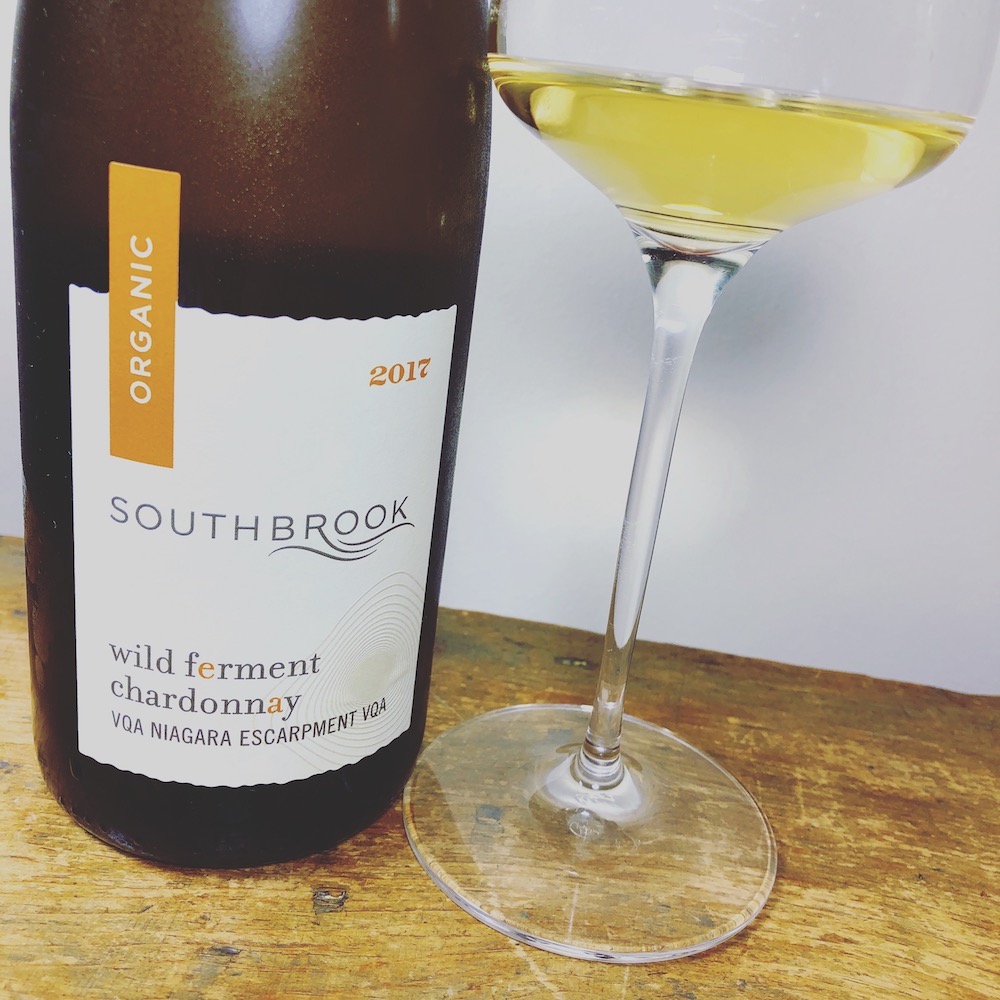
Southbrook Wild Ferment Chardonnay 2017 ($40, 92 points) —It should go without saying: Southbrook only uses grapes that are organic certified and farmed biodynamically (so suitable for vegans and vegetarians). Working with selected organic Chardonnay growers, individual vineyard lots were fermented wild in French oak barrels. After aging, select barrels were blended. The 2017 wine is the first vintage of the “Wild Ferment Chardonnay” series not from the estate vineyard. The fruit was sourced from the Saunders family on their home vineyard in Beamsville. This is a gorgeous and personable Chard with an expressive nose of pear/quince, subtle spice, and a lovely vein of citrus and minerality. It’s fresh and clean on the palate with rousing acidity that amps up the range of orchard fruits and lemon accents melded perfectly to elegant oak-inspired spices. Lots of room for this to grow with some time in the cellar.

Domaine Queylus Réserve Chardonnay 2016 ($38, 92 points) — This is a bolder, weightier Chardonnay than what is produced in a normal vintage in Niagara, but all together interesting to see how a warmer season changes a wine. It possesses such wonderful aromatics of creamy pear, minerals, rich baked apple and well-integrated spice notes. There is weight and complexity to this fine Chardonnay on the palate with rich flavours of poached pear, apple, citrus accents, saline minerality, spice and some freshening acidity that keeps everything lively through a long finish.
Honourable mention:
 Tawse South Bay Chardonnay 2015, Prince Edward County ($35, 93 points) — This second edition of Chardonnay is sourced from Huff Estate’s South Bay parcel in Prince Edward County (so, not technically a Niagara wine, but made in Niagara by winemaker Paul Pender) and sees 12 months of French oak. It’s a nice addition to the estate’s single-vineyard, terroir-driven Chardonnay program that produces some of this country’s finest examples of this versatile grape. There is such a rich, flintly/stony elegance on the nose with notes of apple, pear and integrated oak spice. It’s mouth-filling and vibrant on the palate with pure apple, poached pear, elegant spice and profound minerality notes all perfectly balanced and finessed through the finish. This is fresh and lively from start to end with layers of complexity and pleasure. Nice job.
Tawse South Bay Chardonnay 2015, Prince Edward County ($35, 93 points) — This second edition of Chardonnay is sourced from Huff Estate’s South Bay parcel in Prince Edward County (so, not technically a Niagara wine, but made in Niagara by winemaker Paul Pender) and sees 12 months of French oak. It’s a nice addition to the estate’s single-vineyard, terroir-driven Chardonnay program that produces some of this country’s finest examples of this versatile grape. There is such a rich, flintly/stony elegance on the nose with notes of apple, pear and integrated oak spice. It’s mouth-filling and vibrant on the palate with pure apple, poached pear, elegant spice and profound minerality notes all perfectly balanced and finessed through the finish. This is fresh and lively from start to end with layers of complexity and pleasure. Nice job.
Red Wine of the Year
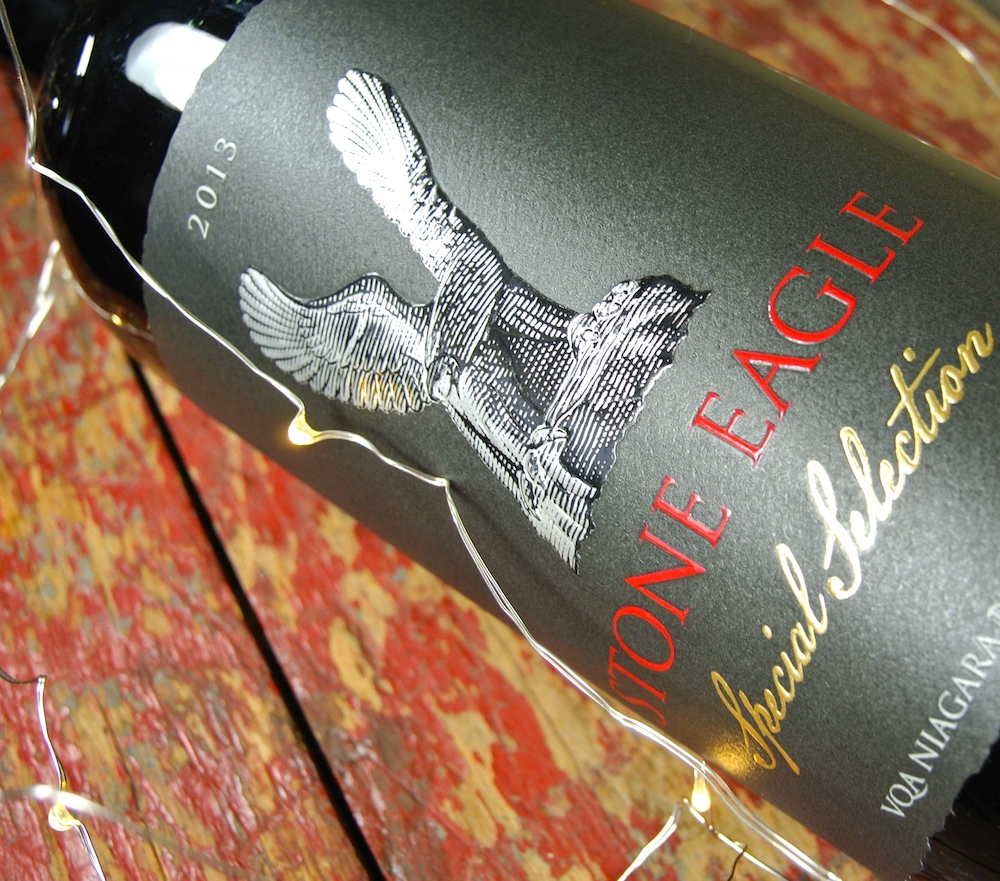
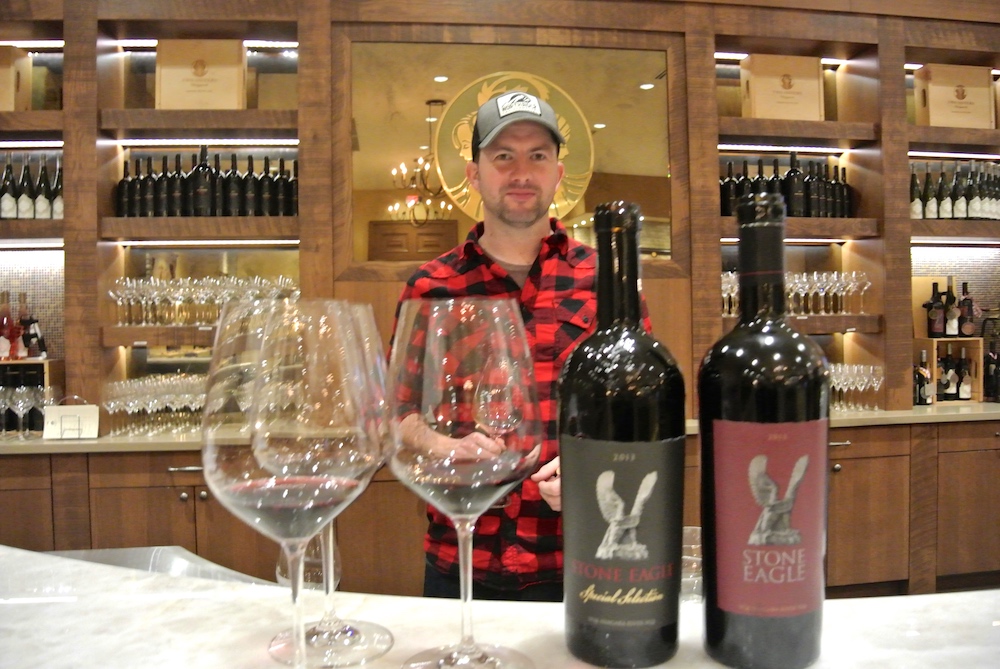
Two Sisters Stone Eagle Special Selection 2013 ($146, 95 points) — The Stone Eagle family is Two Sisters’ flagship – a careful barrel selection of each vintage’s most complex, elegant and age-worthy wines. The name is taken from the two Italian stone eagle carvings that stand proud at the entrance of the Niagara-on-the-Lake winery. It is a blend of 61% Cabernet Franc, 35% Cabernet Sauvignon and 4% Merlot and is the result of three barrels put aside for particular consideration. The wine spends 36 months in 100% new oak, 70% French and 30% American and then a further two years in bottle. “This is the wine Benny (Marotta, winery owner) challenged me to make … but it’s Niagara,” says winemaker Adam Pearce, above. Marotta likes his reds big and bold (a hint might be found in the name … the “special selection” used by Napa’s Caymus winery) and Pearce has done that while keeping the integrity of its Niagara roots.
I swore out loud when I first put my nose in this red, such incredibly beautiful aromas of sweet raspberry, cherries, crème de cassis, graphite, roasted espresso bean, integrated herbs, sweet Cuban cigar leaf and then the range of extravagant oak spices kick in. Drawing in a big gulp, I am expecting a ferocious wall of tannins but am pleasantly surprised to find a supple, silky feel to this bold wine. The fruit rises above it all — ripe red berries, cassis and currants — followed by such gorgeous spice notes and underlying herbs and tobacco accents. It is really quite extravagant, a velvety smooth delivery with both power and finesse through an long, long finish. Now, not everyone can wait five years to release their wines, but here, from the coolish 2013 vintage in Niagara, it was crucial to soften the sharp edges and let this wine show its full potential. It is a wine that is showing perfectly from the bottle now but will age gracefully for 5+ years. A showstopper and deserving of your attention even if it is one of the most expensive red wines ever made in Niagara (but not the most expensive).
The Rest of the Red Wines of the Year
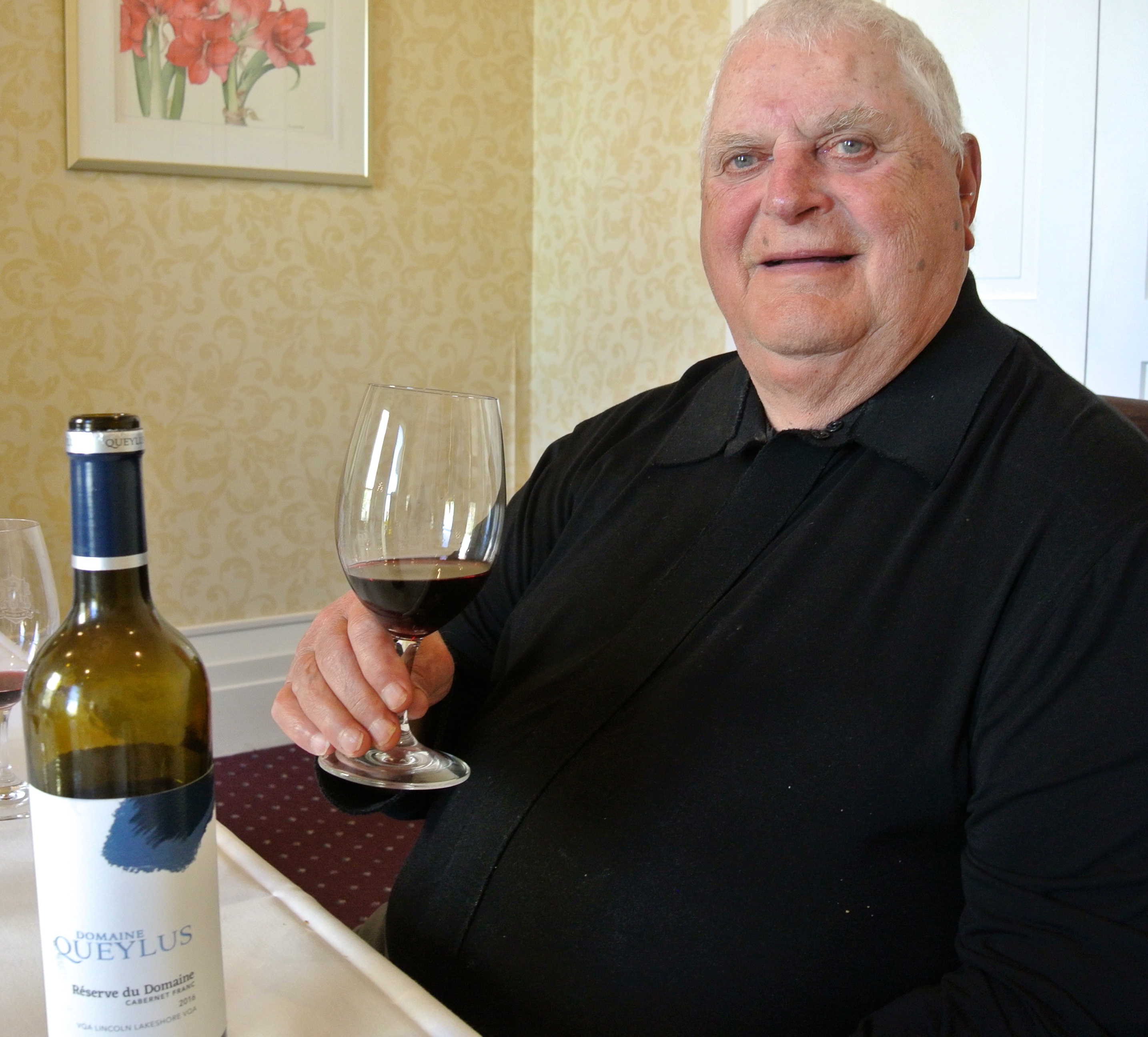
Domaine Queylus Réserve du Domaine Cabernet Franc 2016 ($38, 94 points) — “I think the best grape in Ontario is Cabernet Franc,” said legendary Quebec restaurateur and wine collector Champlain Charest (above), a partner in Queylus, during a tasting earlier this year. This Cabernet Franc (with a touch of Merlot) is simply beautiful in every aspect. Just a fabulous nose of savoury red fruits, black currants, anise, graphite, iron and integrated herbs and spices. It’s rich, layered and textured on the palate with a range of red fruits, black currants, herbs, spice, minerals and length through a clean and polished finish.
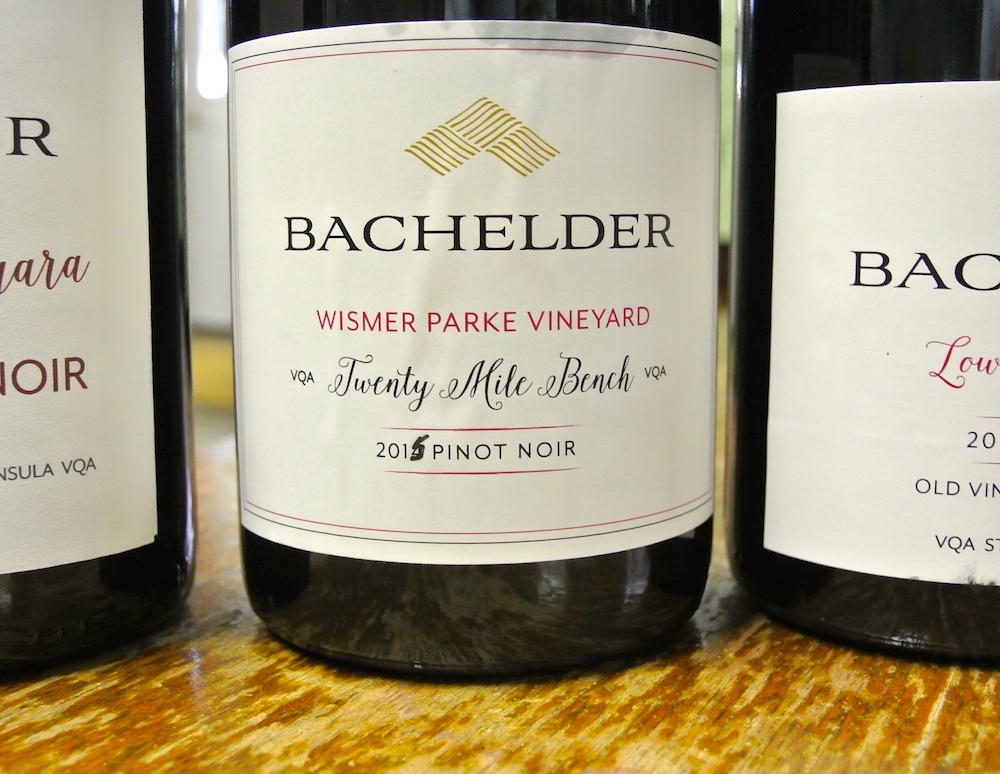
Bachelder Wismer-Parke Vineyard Pinot Noir 2015 ($45, 93 points) — This is the second vintage of Wismer-Parke, from a vineyard south of Highway 8 and on the eastside of Victoria on the Twenty Mile Bench. If you ask winemaker Thomas Bachelder, he would argue that this vineyard is as close as it gets to “grand cru” in the region. This version is pretty and delicate on the nose with aromas of cherries, crunchy raspberries, violets and perfume that leads to iron/slate minerality with soft oak spice notes. It’s focused on the palate with lovely tart cherry, bramble and savoury raspberry fruit and spice all delivered on a velvety smooth bed of tannins through a long finish. Good potential for the cellar.
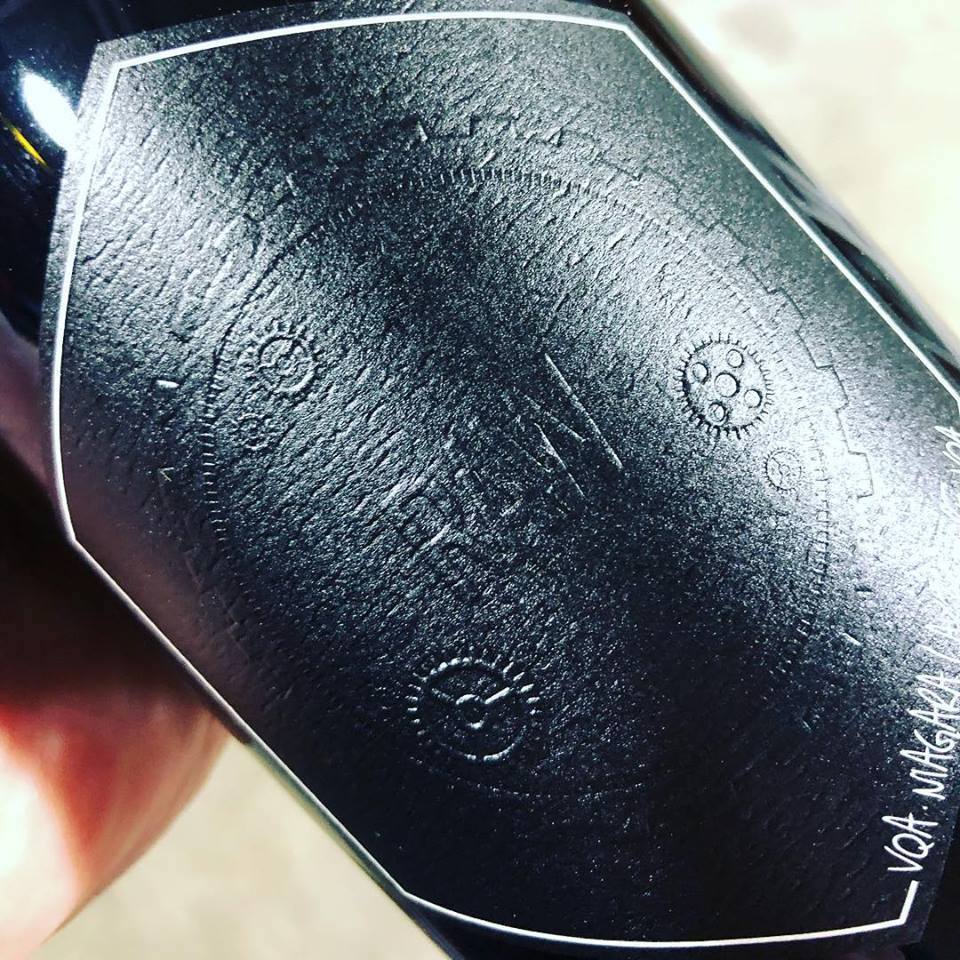
Big Head RAW Petit Verdot 2017 ($65, 93 points) — Not a lot of single-varietal Petit Verdot being made in Niagara and, I would hazard a guess, no other being made like this: raised in concrete, wild fermented, whole cluster pressed with carbonic maceration, and bottled unfiltered. The appellation for the grapes is Four Mile Creek. The nose is an exciting melange of heavily scented red berries, plums, wild blueberries, herbs and chamomile tea. It is lively on the palate with bright and tangy red berries, cassis and plums with added underlying mintiness, plush tannins and depth through the finessed finished. Quite a wine and not like any other Petit Verdot I have tasted.
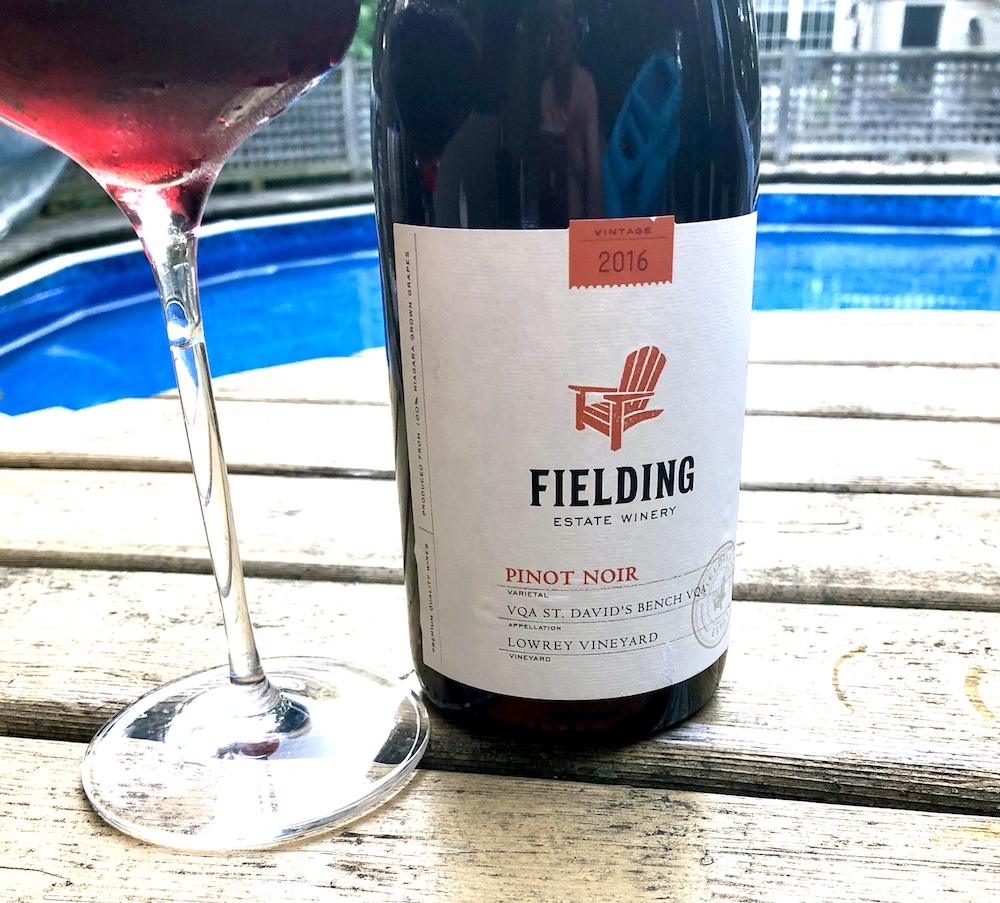
Fielding Estate Lowrey Vineyard Pinot Noir 2016 ($43, 93 points) — Some of the finest Pinot Noir grapes in Niagara come from this tiny vineyard in St. David’s and only five winemakers get to play with the grapes grown there (Richie Roberts from Fielding, Thomas Bachelder, Wes Lowrey from Five Rows Craft Wine (of course), Shauna White from Adamo and Ilya Senchuk from Leaning Post). Each winemaker delivers a different expression of Pinot Noir from this fascinating and historic piece of Pinot heaven. Roberts has really nailed it in 2016. A seductive nose of black cherry, bramble, violets, forest floor, cassis and underlying spice notes with persistence and personality. It’s medium bodied but shows structure and lovely texture on the palate to go with ripe and evident tannins in support of a rich broth of red fruits, chalky minerality, cassis, anise and elegant wood spices. Such depth of flavour through the long finish. Can cellar this for 6+ years and it will just get better.

Foreign Affair Cabernet Franc 2010 ($110, 93 points) — This was the signature wine in founder Len Crispino’s appassimento lineup, the wine all others lead to. He always envisioned Cabernet Franc as the top candidate for his drying racks. Every single grape that went into this wine was dried for 100-plus days and was aged in for 27 months in French oak barrels. It then spent five years in bottle before being released. This may be the last 2010 wine from Niagara released this late (though I’ve said that before and have been wrong). By the way, this tips the scales at a hefty 16.5% abv, so not for the squeamish or those looking for a nice sipper before dinner. This is serious stuff that requires a big leather chair, a decanter and, as the tech sheet says: “A cigar, or sitting by the fire.” The aromas on the nose of this behemoth teem with thick, juicy waves of black currants, figs, kirsch, savoury herbs, cigar-box cedar, toasty vanilla, campfire smoke and rousing spice notes. It is a substantial wine on the palate but as generous as it is, it still shows rather nicely at this point in its short evolution. The flavours range from jammy cherry/currant compote to rich blackberries and raspberry bramble with notes of sweet tobacco, dark chocolate and thick spices all delivered on a plush bed of tannins. The finish lasts forever and suggests a very long life ahead for this wonderful wine.

Hidden Bench Rosomel Vineyard Pinot Noir 2015 ($58, 93 points) — This is the first single-vineyard Pinot Noir bottling from the estate’s Rosomel Vineyard, which, like all Hidden Bench wines, is 100% certified organically. It is such a beautiful and pretty Pinot with a nose of raspberry/bramble, tart cherry, strawberries, perfumed spice notes, and a range of earth and mineral accents. It reveals complexity and structure on the palate with savoury red fruits, plush/ripe tannins, integrated oak spices, and length through the finish. A true beauty that will be quite comfortable in the cellar for 3+ years.
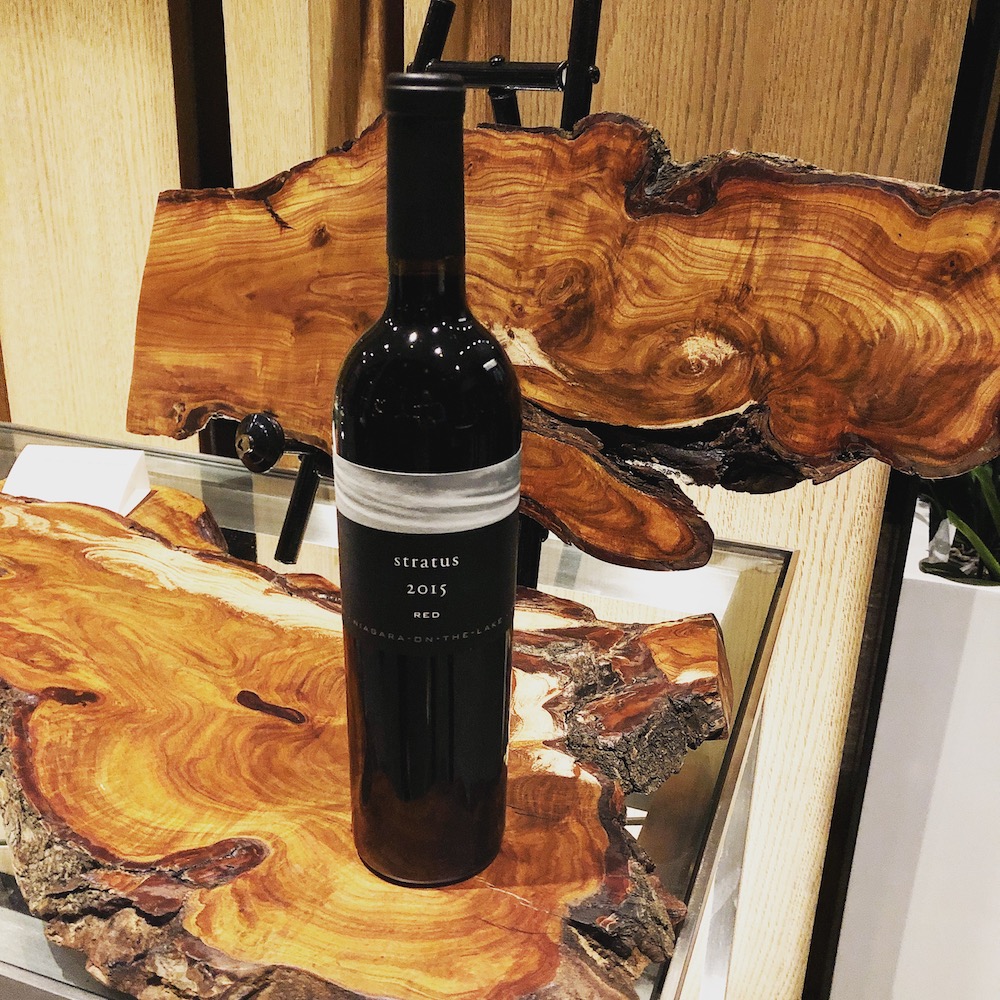
Stratus Red 2015 ($48, 93 points) — In talking to winemaker JL Groux when tasting this wine in the fall, he explained that because of the terrible winter of 2015 (the back half of the brutal Polar Vortex that killed so many vines in Niagara) yields were down drastically. But while many wineries diverted grapes from their top bottlings, Stratus begins at the top and works down, so that was not an option. This estate vineyard blend of all five Bordeaux varietals (Cabernet Sauvignon, Cabernet Franc, Petit Verdot, Merlot and Malbec) had yields as low as 1.2 tonnes per acre. The irony of 2015 is this: it was the winter kill that made it a tough vintage not the quality of the grapes or harvest — both were quite good for red grapes. Like the Stratus White, Groux has dropped a key grape in the red blend that we’d come to expect — Syrah. I like this purer expression of the 2015 with a rich and simply beautiful nose of fleshy and concentrated black currants, blackberries, sweet tobacco, graphite, cassis and untamed (at the moment) barrel spice notes. Everything is a bit out of whack right now — juicy and thick dark fruits, big barrel spice notes, firm tannic structure, high acidity — but this will all integrate into a complete and harmonic red that will reward for a decade or more if cellared properly. Everything I like about personable red wines is right here in this bottle.
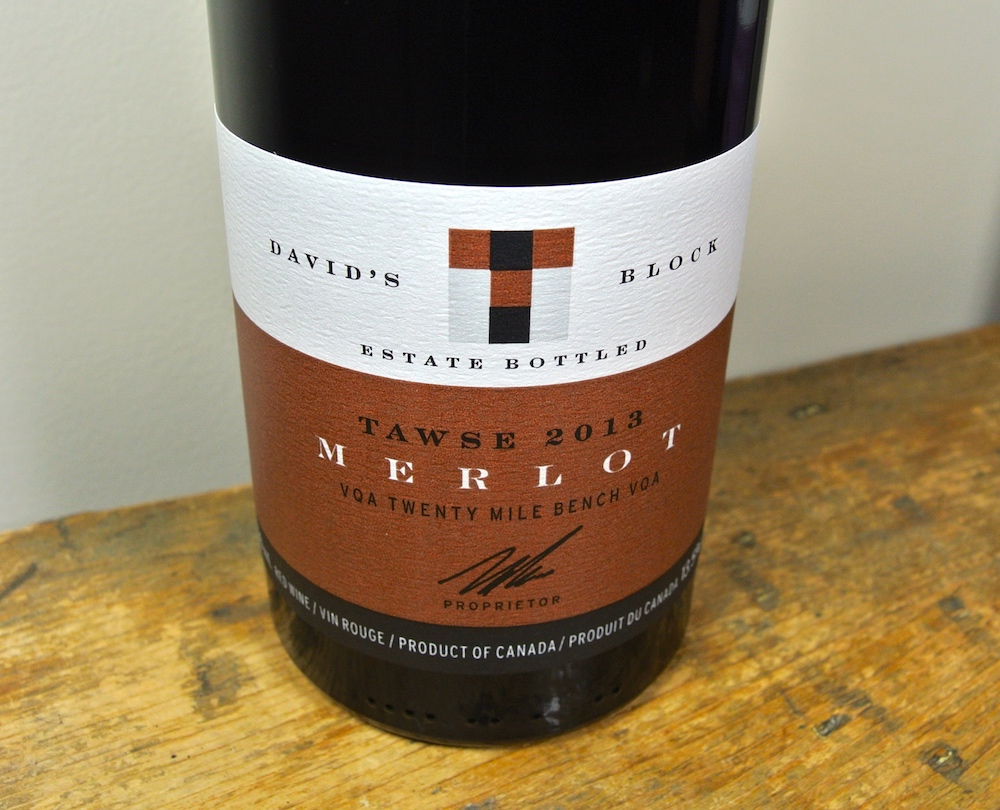
Tawse David’s Block Merlot 2013 ($50, 93 points) — After a horrible winter in 2014, this is the last vintage ever of the David’s Block Merlot and it’s going out with a bang. Despite a cooler vintage in 2013, Pender has given this Merlot a proper send off. It has a gorgeous, irresistible nose of black currants, sweet tobacco, and array of elegant spice notes, earth, kirsch, ripe blackberries and earthy/brambly notes. It’s thick and juicy on the palate and shows a range of currants, black pipe licorice, graphite, earth, meaty notes and layers of complexity and spice. This is a highly structured Merlot with a firm tannic backbone and will continue to improve in bottle for five+ years.

Vineland Estates Reserve Cabernet Franc 2015 ($50, 93 points) — For his beloved Reserve Cab Franc, winemaker Brian Schmidt still only uses neutral oak barrels but ups the time spent to 18 months. This is the top expression of his favourite grape and the result is a fabulous treat for Cab Franc lovers. The nose is ripe and fulsome with purity of black currants, cassis, underlying cherry, leather, vanilla bean, cocoa and herbs that come at you in waves. On the palate, it perfectly demonstrates how a wine can straddle that line between fresh and ripe with concentrated blackberries, currants, cassis followed by herb, anise and spice accents in a textured, complex style from beginning to end. This is a beautiful wine that is drinking really fine right now but can improve in the bottle for 4+ years.
Honourable mention:
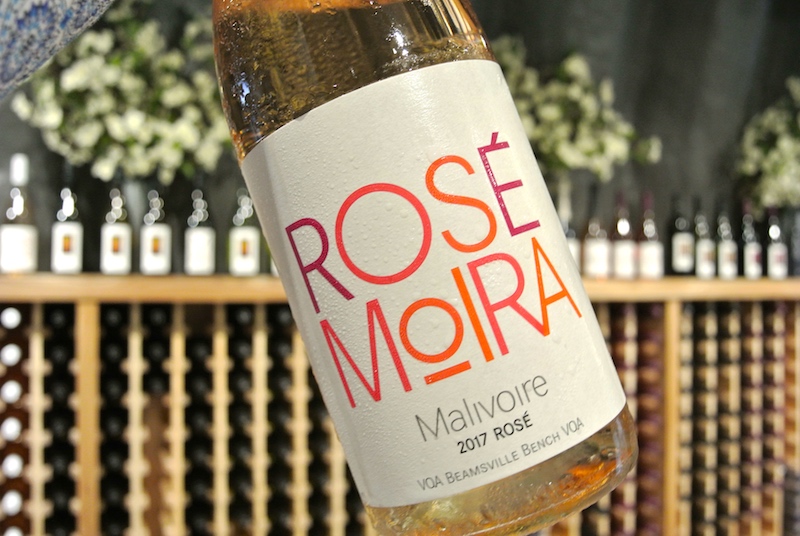
Malivoire Moira Rosé 2017 ($25, winery only, 93 points) — Not technically a red or white, but needs to be on this list somewhere. It’s the bomb. The most complex and interesting rosé from Niagara I have tasted. Again, made from 100% Pinot Noir, but this one is from the estate’s main single vineyard called Moira, named for Malivoire’s wife Moira Saganski and purchased in 1995. Moira is distinguished by vines whose deep roots ensure robust health and vigorous fruit acidity. “These wines have always had harmony of aromatics, texture and length while aging infinitely … the 1998 (first vintage) is still showing beautifully,” commented Southbrook winemaker Ann Sperling, in a poll of Niagara’s top vineyards published in Wines In Niagara. Winemaker Shiraz Mottiar says the Moira “sings a little longer” and is made in a more precious, subtler style that sneaks up on you. The nose is tight, delicate and complex with a range of red fruits and floral notes. It shows its true beauty on the palate with such expressive crushed red berries, layers of complexity, earth and bramble undertones and taut tension between the electric acidity and the juicy fruits all leading to a fresh, clean and super-long finish.
Past winners of the Most
Thrilling Niagara Wines
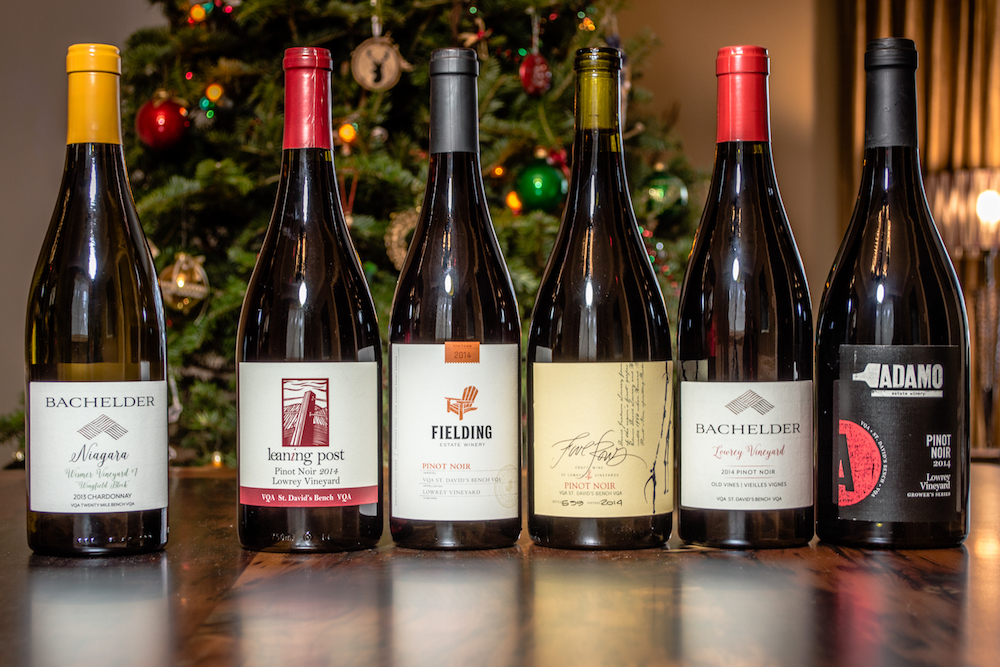
For a list of last year’s winners and a link to previous winners, please go here.






Thanks for your list. We love Canadian wines. Sad that most of the world has no idea…
Question for you: did you try any of Adnan Icel’s brilliant wines from Icellers? His big reds are mind-blowing (insane how good his ON Cab Sauvs are) but his Chard, Sauv Blanc and reserve Cab Franc rose are all superb as well…..we are big fans of him and his winery.
Thanks for your note. Icel is on my list for 2019 … meant to get there but just ran out of time this year. Cheers!